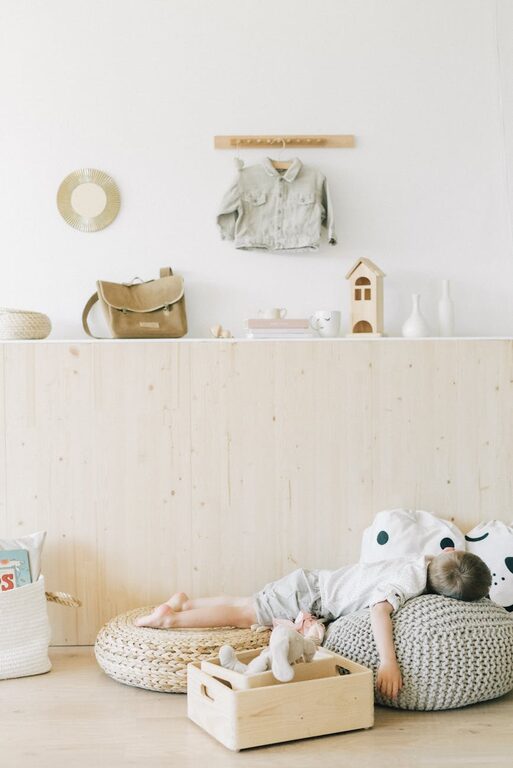Tips for Choosing Calm Colors to Transform Your Home

Creating a peaceful and inviting atmosphere in your home often starts with the colors you choose. Calm colors can make your living spaces feel more relaxing, balanced, and cozy. Whether you’re refreshing a single room or planning a full home makeover, selecting the right hues can have a powerful effect on your mood and well-being.
In this post, we’ll explore helpful tips to choose calm colors for your home that promote tranquility and style.
Why Choose Calm Colors?
Calm colors tend to be soft, muted tones that don’t overwhelm the senses. They can:
– Reduce stress and anxiety
– Make spaces feel more open and airy
– Create a cozy, welcoming environment
– Help improve focus and restfulness
Common calm colors include gentle blues, greens, soft neutrals, and pastel shades. Understanding how to use these colors effectively will help you create a home that feels like a peaceful retreat.
Tips for Choosing Calm Colors
1. Understand the Psychology of Colors
Colors evoke different emotions. Here’s how some calm colors can influence your space:
– Blue: Often associated with serenity and calmness, blue can lower heart rate and create a sense of tranquility.
– Green: Represents nature and renewal, providing a refreshing and balanced vibe.
– Soft Neutrals: Shades like beige, taupe, and warm gray create soothing backdrops that are easy on the eyes.
– Lavender and Pastels: Light purple or muted pink tones bring gentle warmth and softness without being too bold.
2. Consider the Room’s Purpose
Choose colors that match the function of the room:
– Bedroom: Soft blues, greys, or lavenders encourage rest and relaxation.
– Living Room: Warm neutral tones or pale greens can foster conversation and calmness.
– Kitchen: Light shades of blue or green can create fresh, peaceful energy.
– Bathroom: Pale aqua or soft gray promote cleanliness and calm.
3. Test Samples in Different Lighting
Lighting dramatically changes how colors appear. Always test paint samples at different times of the day and under artificial lights:
– Observe how natural sunlight brings out different hues.
– Check colors under warm and cool artificial lighting.
– Make sure the color feels calm rather than too dull or too bright.
4. Use Color in Layers
To create depth and calmness, mix and match related shades rather than using one flat color:
– Pair a muted blue wall with soft off-white trim.
– Use textured fabrics in pale colors for added dimension.
– Introduce accent pieces (pillows, rugs, art) in complementary calm colors to tie the room together.
5. Balance Color with Texture and Materials
Color alone is not enough. Calming spaces often combine soothing colors with natural materials and textures:
– Wood accents (light oak or birch) soften the look.
– Linen curtains, cotton throws, and woven rugs add tactile comfort.
– Matte finishes on walls and furniture prevent glare and enhance the softness of colors.
6. Avoid Overly Saturated or Dark Colors
Bright, intense colors like neon or deep reds can feel exciting but also stressful. For a calm home environment, it’s best to:
– Stick to low saturation tones.
– Choose lighter shades that reflect light.
– Use darker colors sparingly, perhaps as small accents rather than wall colors.
7. Use White and Off-White Wisely
White and off-white can help enhance calmness by providing clarity and brightness. However:
– Pure white can feel too sterile or cold in large amounts.
– Warm off-white shades create a softer, more inviting feel.
– Pair white walls with soft-colored furniture or décor to avoid a stark appearance.
8. Incorporate Nature-Inspired Colors
Colors drawn from nature are inherently calming. Think:
– Soft sky blues
– Gentle moss greens
– Sandy beiges
Adding plants, natural wood, or stone elements along with these colors will reinforce a peaceful atmosphere.
Final Thoughts
Choosing calm colors for your home is a rewarding process that can enhance your daily life. The key is to select hues that reflect tranquility, test them thoughtfully, and complement them with textures and natural materials. Whether you prefer soothing blues, gentle greens, or warm neutrals, thoughtful color choices will help you create a space designed for relaxation and comfort.
Take your time exploring colors, and soon you’ll have a beautifully serene home to enjoy every day. Happy decorating!
